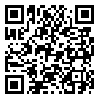Volume 9, Issue 1 (3-2006)
J Arak Uni Med Sci 2006, 9(1): 71-22 |
Back to browse issues page
1- , shahrambaraz@yahoo.com
Abstract: (42787 Views)
Introduction: The main goal of treatment and care of chronic patients including those suffering from end stage chronic renal failure is to promote their health and their quality of life (QOL). Various researches have shown that health level, performance status and QOL, especially for hemodialysis patients are often less than expected. So, an attempt to find effective and cost benefit education methods in this area seems to be necessary. This study is done to compare the effects of two educational methods of direct and indirect (multimedia educational package) self-care program on QOL and physical problems of hemodialysis patients. Materials and Methods: This quasi experimental research was carried out on two groups of hemodialysis patients. Sixty three patients were selected from three main dialysis centers in Tehran and allocated randomly into two groups (group one 32 and group two 31 patients). The first group used the direct educational program and the second group used the indirect educational package (multimedia). Patients were assessed before education using QOL questionnaire (short form SF-36), need assessment questionnaire and checklists. After determining educational needs and status of the patients, a self care educational program was designed based on self care model and the principles of patient education and also through counseling with nephrologists and nutritionists. The educational program was implemented directly on group one (direct education). Also it was recorded and indirectly used for the second group as a multimedia educational package once a week within one month during dialysis. After implementation of the self care educational program, both groups were assessed and measured again by same questionnaires and checklists. Data was analysed using student T, Wilcoxon and Mc Nemar tests. Results: Findings showed that most of studied variables including laboratory tests, blood pressure, weight gain between two dialysis, skin itching, edema and some vascular complications are decreased significantly in each group before and after education. QOL was also significantly improved in each group. But there was no significant difference between the two groups. Conclusion: Since, there was no significant difference between the two groups in terms of efficiency of two methods of direct and indirect (multimedia) educational self care programs and also due to the problems and higher costs of the direct educational program comparing to the indirect method, the indirect method is recommended as an effective, cost benefit, simple and patient-friendly method for hemodialysis patients.
Subject:
General
Received: 2009/03/11
Received: 2009/03/11
| Rights and permissions | |
 |
This work is licensed under a Creative Commons Attribution-NonCommercial 4.0 International License. |


